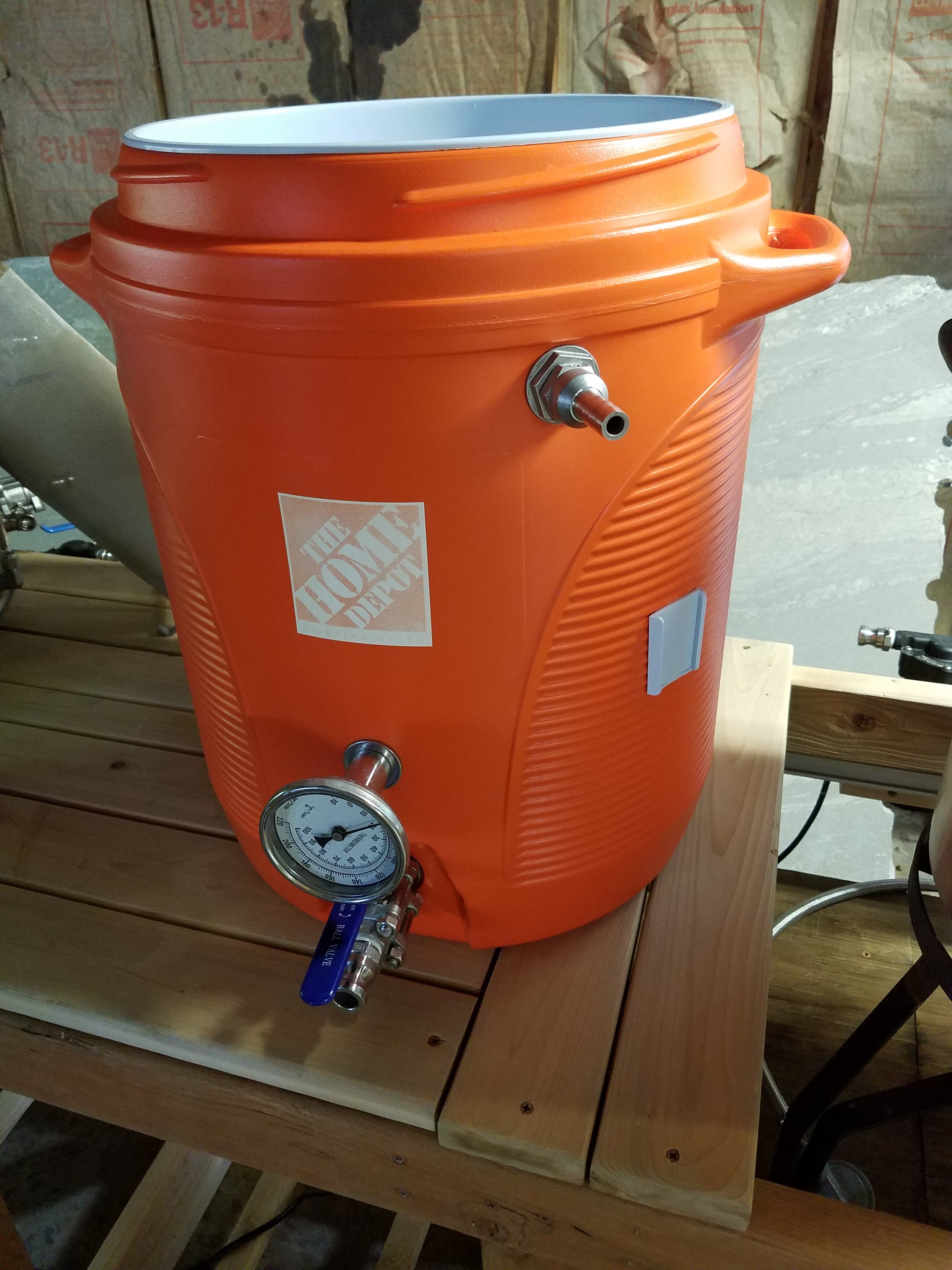- Joined
- Nov 19, 2017
- Messages
- 250
- Reaction score
- 93
After brewing for several years on a tiered propane / batch sparge setup getting decent brewhouse efficiencies, I finally moved to a custom built electric HERMS brewery. Yesterday was my first brew day on this setup and I had a few challenges. I decided to brew a Citra Pale Ale (http://brewgr.com/recipe/52929/pale-ale-dry-hopped-with-citra-recipe?public=true)
Any suggestions on how to deal with a slow down in recirculation during mash? Was it my grain bill? Should I have added some rice hulls? Before recirculating, should I have done a manual vorlauf or just let the pump handle that?
For my fly sparging... should I consider a sparge ring? https://www.brewhardware.com/product_p/mashspargering.htm ?
Any other suggestions would be greatly appreciated.
- The biggest challenge that I ran into was getting my mash to recirculate consistently. After mashing in and stirring for several minutes, I opened the valves and began to recirculate through my HERMS coil and back into the mash tun. The pressure started out fine but after 5-10 minutes it would slow to a trickle. I usually do a pretty thin mash thickness (1.75qt/lb), but I'm guessing with my grain bill (specifically the white wheat) just gummed up? I'm using two "china chugger" pumps (https://www.aliexpress.com/item/Hig...417.html?spm=a2g0s.9042311.0.0.2ad24c4dZMhWHY) and I have to assume they aren't the problem here (especially since the pressure starts strong initially).
- I'm mashing in a cooler and added a bulkhead on the lid. On the inside I'm using a simple elbow, barb, and 2-3' silicone hose. I battled that darn hose the whole mash and sparge process. I could NOT get it to float above the grain bed easily. I think I'm going to solve that by buying one of these: https://www.brewhardware.com/product_p/mashrecirculation.htm
- Mash out / Fly sparging -- first time attempting both. All in all, I think it went ok. I turned my HLT up to 170 and it got there within about 10-15 mins. The MT didn't budge at all...probably due to lack of water flow. I decided to proceed with fly sparging once HLT got to 170. Wound up with about a 45 min sparge, but as I got towards the end I noticed that the stupid silicone hose adding hot water to the top, really only rinsed about half of the grainbed (since the bed was built up on the side it wasn't circulating water to).
Any suggestions on how to deal with a slow down in recirculation during mash? Was it my grain bill? Should I have added some rice hulls? Before recirculating, should I have done a manual vorlauf or just let the pump handle that?
For my fly sparging... should I consider a sparge ring? https://www.brewhardware.com/product_p/mashspargering.htm ?
Any other suggestions would be greatly appreciated.





